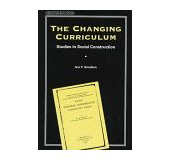The Changing Curriculum: studies in social construction
Chariots of Fire
The problem of reconceptualising our study of schooling can be partially illustrated in the basic etymology of curriculum. The word curriculum derives from the Latin word currere, which means to run, and refers to a course (or race-chariot). The implications of etymology are that curriculum is thereby defined as a course to be followed, or most significantly, presented. As Barrow notes 'as far as etymology goes, therefore the curriculum should be understood to be 'the presented content' for study' (Barrow 1984, p.3). Social context and construction by this view is relatively unproblematic for by etymological implication the power of 'reality-definition' is placed firmly in the hands of those who 'draw up' and define the course. The bond between curriculum and prescription then was forged early; it has survived and strengthened over time. Part of the strengthening of this bond has been the emergence of sequential patterns of learning to define and operationalise the curriculum as prescribed.
From its Latin origins it is important to trace the emergence of curriculum as a concept which began to be used in schooling. According to Hamilton and Gibbons 'the words class and curriculum seem to have entered educational discourse at a time when schooling was being transformed into a mass activity' (Hamilton and Gibbons 1986, p. 15). But the origins of the class/curriculum juxtaposition can be found earlier and at the higher education level. From Mir's analysis of the origins of 'classes' as first described in the statutes of the College of Montaign we learn:
'It is in the 1509 programme of Montaign that one finds for the first time in Paris a precise and clear division of students into classes. . . That is, divisions graduated by stages or levels of increasing complexity according to the age and knowledge required by students' (Hamilton and Gibbons 1986, p.7).
Mir argues that the College of Montaign actually inaugurated the Renaissance class system but the vital connection to establish however is how organisation in classes was associated with curriculum prescribed and sequenced for stages or levels.
